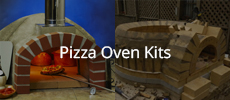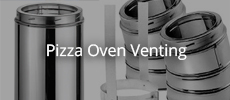Announcement
Collapse
No announcement yet.
Fiber glass insulation for the base?
Collapse
X
-
The primary insulation provided by the empty bottle method is the air space. Crushing the bottles defeats the purpose of creating an air gap insulation layer. Salt is not a good insulator...you can coat a fish or roast with salt and cook it. If salt is the cheapest material you have to fill the gaps between the empty bottles, then it's just as effective as using sand. Just remember that you want to maximize the air gaps...so packing your bottles closely together is important. If you have enough space, standing the empty bottles upside down would give you an excellent base of insulation. In either method, you would want crushed pumice, sand, or salt as a thin layer on top to help level the cooking floor and "cushion" the glass.
-
I know of people that use crushed glass topped with salt for the base insulation, what do you think about that method?Originally posted by SableSprings View PostAnother old school method of insulating the base of your oven is empty wine or beer bottles. They were usually laid side by side on a thin bed of sand and then the spaces between bottles filled in with either sand or cob (mixed with either rice husks or straw). I think if the pumice is available, David's suggestion is the best for an insulating (and supporting) base. If you can't find a lot of pumice, then using what you can find to fill in between the bottles (crushed & mixed with a little water & cement) should provide you a pretty good alternate material insulated base. Kiko Denzer published a book years ago about building cob ovens in which he used rice husks and/or straw mixed with clay for insulation over the denser clay (with less straw added) used for the dome. Be aware that cob ovens need protection from the weather & rain.
Good Luck!
Leave a comment:
-
Another old school method of insulating the base of your oven is empty wine or beer bottles. They were usually laid side by side on a thin bed of sand and then the spaces between bottles filled in with either sand or cob (mixed with either rice husks or straw). I think if the pumice is available, David's suggestion is the best for an insulating (and supporting) base. If you can't find a lot of pumice, then using what you can find to fill in between the bottles (crushed & mixed with a little water & cement) should provide you a pretty good alternate material insulated base. Kiko Denzer published a book years ago about building cob ovens in which he used rice husks and/or straw mixed with clay for insulation over the denser clay (with less straw added) used for the dome. Be aware that cob ovens need protection from the weather & rain.
Good Luck!
- Likes 1
Leave a comment:
-
Not sure about rice husks, but if you’re in the north you could fossick on beaches for pumice stone, crush it a bit and mix it with water and cement.
Pumice is less dense than calcium silicate board although when cement is added to it probably denser, still pretty good insulation.Last edited by david s; 08-12-2020, 02:23 AM.
Leave a comment:
-
i want to use it so badly haha, i think i have to find a way around it, what do you think about using cob with rice husks for the insutalion of the base and walls of the dome?Originally posted by david s View PostBack in 2007 when I built my first oven, I used 100mm thick fibreglass insulating bats under the floor. Contrary to advice about binders burning out, it worked pretty well with no evidence of deterioration after two years when I replaced it with another oven. To get around the compression problem I laid the large 305 x 230 x 80mm firebricks loose with props of insulating firebrick at their joins and the spaces between the props filled with the fibreglass. I’m not recommending it, but there are often ways around some materials deficiencies.
Leave a comment:
-
Yes, i found out that fiber glass is rated to 300°C...Originally posted by JRPizza View PostFiberglass or any blanket type insulation is not firm enough to use under your dome and I don't believe fiberglass is recommended for surrounding the dome. Copy and paste the search term below into your browser and you will find quite a bit of discussion on it's use.
fiberglass fornobravo site:fornobravo.com
Leave a comment:
-
Back in 2007 when I built my first oven, I used 100mm thick fibreglass insulating bats under the floor. Contrary to advice about binders burning out, it worked pretty well with no evidence of deterioration after two years when I replaced it with another oven. To get around the compression problem I laid the large 305 x 230 x 80mm firebricks loose with props of insulating firebrick at their joins and the spaces between the props filled with the fibreglass. I’m not recommending it, but there are often ways around some materials deficiencies.
- Likes 1
Leave a comment:
-
Fiberglass or any blanket type insulation is not firm enough to use under your dome and I don't believe fiberglass is recommended for surrounding the dome. Copy and paste the search term below into your browser and you will find quite a bit of discussion on it's use.
fiberglass fornobravo site:fornobravo.com
- Likes 1
Leave a comment:
-
Fiber glass insulation for the base?
Fiber glass insultion is the only kind of insulation that i can find where i live (venezuela) i know i can use it for the insulation of the walls of the dome, but can i use it for the insulation of the base? beneath the cooking surface?
I can't get my hands on perlite, vermiculite, etcTags: None





Leave a comment: